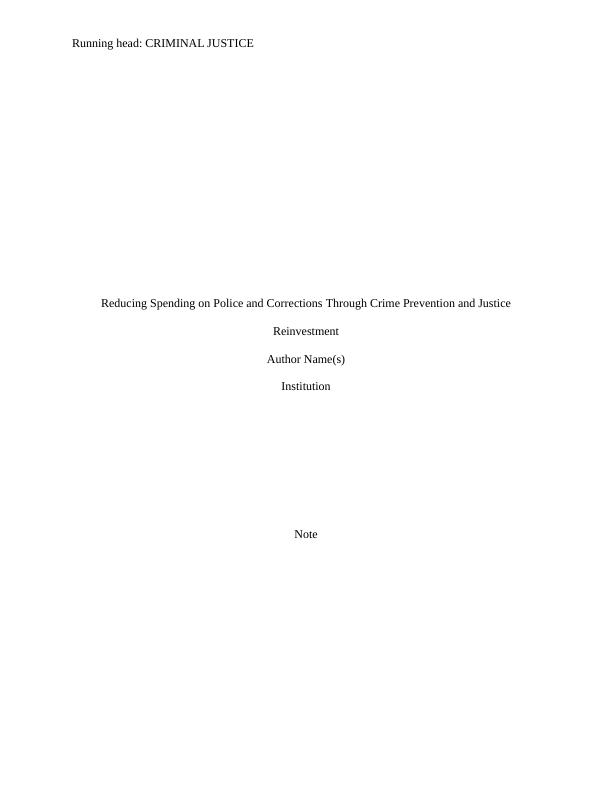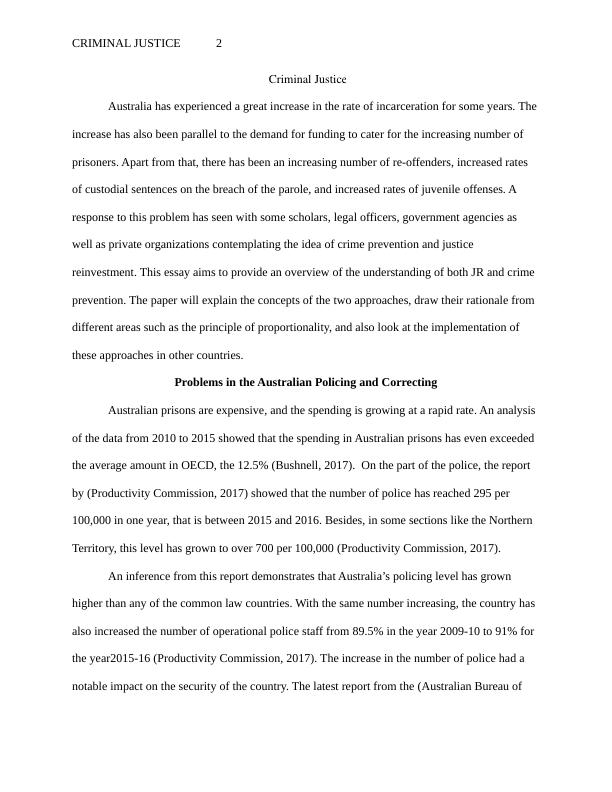Reducing Spending on Police and Corrections Through Crime Prevention and Justice Reinvestment
Write an essay aimed at convincing the current Victorian state government to invest more in crime prevention and justice reinvestment as a means of reducing spending on police and corrections
14 Pages3825 Words495 Views
Added on 2023-06-04
About This Document
This essay discusses the concept of Justice Reinvestment and Crime Prevention as possible solutions to Australia’s rising rate of incarceration. It explains the concepts of the two approaches, draws their rationale from different areas such as the principle of proportionality, and also looks at the implementation of these approaches in other countries.
Reducing Spending on Police and Corrections Through Crime Prevention and Justice Reinvestment
Write an essay aimed at convincing the current Victorian state government to invest more in crime prevention and justice reinvestment as a means of reducing spending on police and corrections
Added on 2023-06-04
ShareRelated Documents
End of preview
Want to access all the pages? Upload your documents or become a member.
Imprisoning Offenders
|8
|2161
|190
Is Increasing Police Numbers the Best Way to Reduce Street Crime?
|9
|1859
|82
Assignment on Juvenile Delinquency | Annotated Bibliography
|7
|1631
|508
Abolition of Prisons and Crime Prevention in Australia
|6
|1509
|154
(Solution) Essay on Criminal Law
|10
|3048
|195
Alternative solution to the criminal justice policy
|7
|1536
|16




